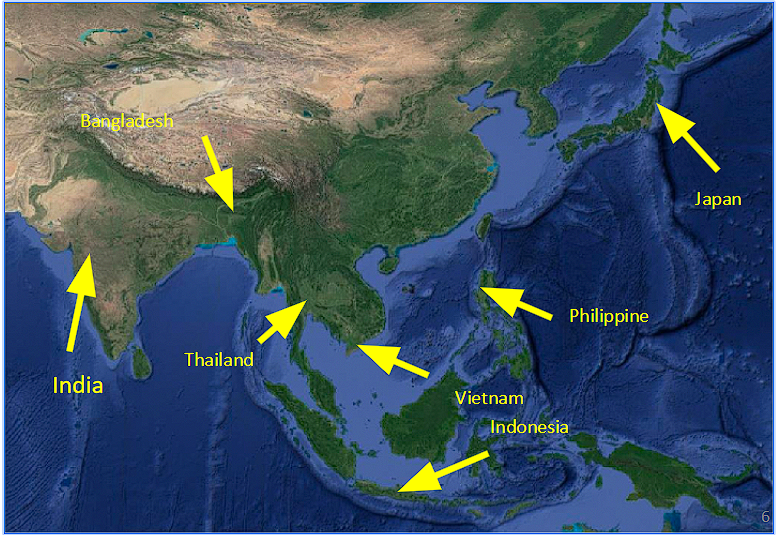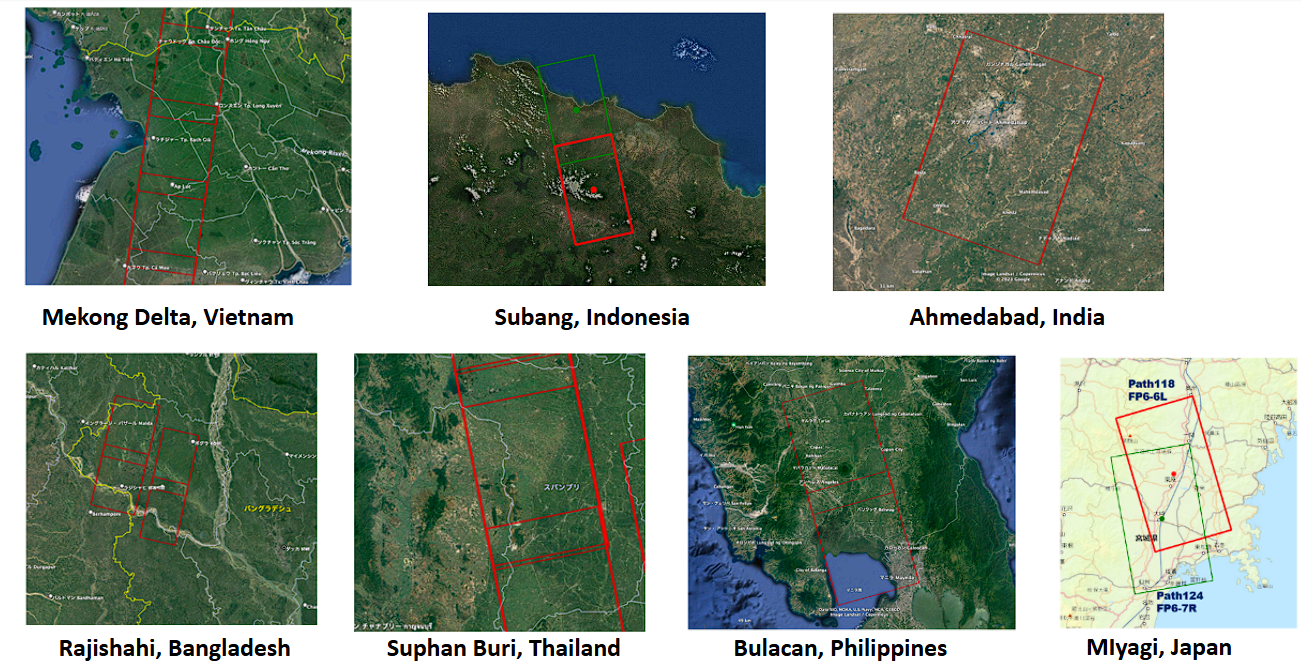About CH4Rice Project
Background
Methane (CH₄) is a powerful greenhouse gas, and methane emissions from rice paddies are estimated to make up approximately 8% of total global anthropogenic methane emissions. Reducing methane emissions could make an effective contribution to rapid climate change mitigation on the decadal timescale. Methane emissions from rice paddies can be reduced by methods such as Alternate Wetting and Drying (AWD).
The CH4Rice project was approved at the SAWG meeting during APRSAF-28 in Hanoi, Vietnam in November 2022. It has two main aims: contributing to climate change mitigation, and promoting sustainable agriculture. The project seeks to achieve these goals by encouraging the adoption of AWD and other water-saving irrigation techniques. These techniques can improve water efficiency, and reduce methane emissions from rice paddies by shortening the inundation period—that is, reducing the amount of time the crop remains submerged in water.
CH4Rice seeks to integrate satellite and in situ data, and other field observations to develop methodologies which allow the monitoring of water levels in many rice paddies across wide areas and at scale. It is hoped these methodologies will ultimately underpin improved water management practice, and work towards the realisation of reduced methane emissions and the resulting generation of carbon credits that can be applied in national Monitoring, Reporting, and Verification (MRV) systems.
Project Leader: Vietnam National Space Center (VNSC)Objectives and Expected Outcomes
An accurate assessment of CH4 emissions is necessary for achieving sustainable rice cultivation. Hence, the CH4Rice project aims to:
- Improve water management by promoting efficient irrigation techniques such as Alternate Wetting and Drying (AWD).
- Develop Monitoring, Reporting, and Verification (MRV) systems for methane emissions to support carbon credit schemes and contribute to climate change mitigation.
- Promote and participate in regional and globally sustainable agriculture initiatives, including CEOS, SDG Goals 2 & 13, GEOGLAM/Asia-RiCE, and AOGEO.
Implementation Approach
To achieve these objectives, CH4Rice focuses on:
- Developing methodologies for monitoring water inundation and methane emissions from rice paddy fields using satellite and in situ data, and field observations.
- Sharing data, tools, and knowledge to strengthen multilateral collaboration.
- Promoting dialogue with stakeholders and policymakers by presenting findings to inform national policies.
- Aligning with related projects, including SAFE Agromet, and Rice Monitoring.
Study Areas and Data Collection
The project currently utilises full-pol L-band ALOS-2 PALSAR-2 and ALOS-4 PALSAR-4 radar satellite images alongside in situ water-level measurements across multiple super sites in key rice-producing regions:
BRIN Indonesia: Subang
GISTDA Thailand: Suphan Buri
ISRO India: Nawagam
JAXA Japan: Miyagi, Akita, Niigata, Ibaraki
PhilSA Philippines: Bulacan
PUST Bangladesh: Rajshahi
VNSC Vietnam: Mekong Delta (An Giang, Bac Lieu)

Selected CH4Rice Study Sites

Key Actions and Way Forward
Water Inundation Monitoring
- Conducting field surveys and installing in situ water level sensors at study sites.
- Comparing in situ data with satellite radar images to refine monitoring algorithms.
- Expanding research across regions to publish findings as scientific evidence.
Methane Emission Estimation
- Deploying low-cost gas sampling systems to measure methane flux at study sites.
- Enhancing data collection to improve methane emission modelling.
Data and Tool Sharing
- Providing full-pol ALOS-2 and ALOS-4 data to study sites.
- Developing and sharing monitoring tools, platforms, and user training materials.
- Improving water-level sensor calibration for a standardised ground-based database.
Stakeholder Engagement and Policy Impact
- Publishing research papers to provide scientific evidence for policy and real-world applications.
- Engaging with public and private sector stakeholders to explore practical implementations.
Future Plans
CH4Rice will continue to:
- Validate satellite-based methane and water inundation data using field surveys.
- Engage with stakeholders to integrate satellite data into carbon credit methodologies (e.g. Verra, Gold Standard, JCM).
- Collaborate with private companies on emission trading initiatives.
- Provide feedback to sensor manufacturers to improve methane and water-level monitoring technology.
Call for Papers
The special issue editors are calling for papers about "Assessment of Methane Emission from Rice Paddies and Water Management Using Remote Sensing Technology" for a special issue of Remote Sensing (ISSN 2072-4292).
Please see the following link for the details;
https://www.mdpi.com/journal/remotesensing/special_issues/01TSKHAZT7/
Deadline for manuscript submissions: 30 November 2025
